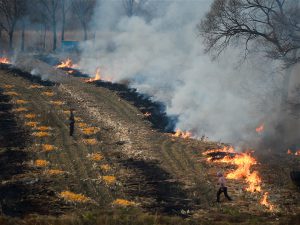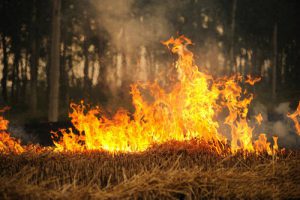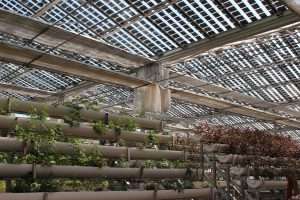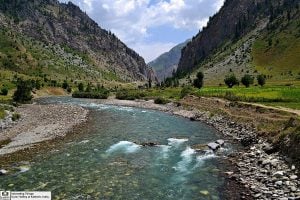The Chinese Revolution of 1949 that brought the Chinese Communist Party to power is often understood to be one of the world-changing events of the modern world, considered comparable in significance to the French Revolution of 1789 and the Russian Bolshevik Revolution of 1917.
Certainly, the creation of the PRC marked an important change in modern Chinese history, ushering in an era dominated by a strong state committed to rapid industrialization, a goal shared by Mao Zedong and his more pragmatic successors, from Deng Xiaoping to current Premier Xi Jinping.
But there were serious constraints on the ability of Chinese leaders to achieve industrialization. At the founding of the PRC, China’s economy had been devastated by decades of civil war and war against Japan (1937-45), as well as hampered by a century of Western imperialist transgressions of China’s sovereignty. Moreover, as part of the American strategy during the Korean War (1950-53), the US imposed an economic blockade on China, leaving the Soviet Union as the only source of outside loans, grants and aid.
But the new People’s China was also confronted with massive environmental degradation, the result of what historian Mark Elvin has called “3,000 years of unsustainable development.” Much of China lay deforested, with trees felled to make way for farms. By 1949, about the only remaining forests were in the three northeast provinces that made up Manchuria, and in the far southwest, especially Yunnan.
Long history of destruction
Intensifying China’s environmental challenges, perhaps most problematic of all, was the declining fertility of farmland. All growing things remove critically important nutrients, especially nitrogen, potassium and phosphorus, from the soil. For generations, China’s farmers had found numerous ways of returning nutrients to the soil, from collecting animal manure and composting green waste to collecting and treating human waste (“night soil”).
Despite all of these innovations, by the early 20th century (and probably earlier), most of China’s farmland was becoming increasingly depleted of critical nutrients, especially nitrogen. By the time the Communists came to power in 1949 there was not much farmers could do using available methods to increase the food supply. This meant there was no way to produce a surplus to finance China’s socialist industrialization, raise standards of living, or even to provide sustenance for a growing population.
And yet, surpluses from agriculture were the only source of capital to finance China’s industrialization. Without access to foreign markets to buy the newly available chemical fertilizers or the technology to build production plants in China, material constraints limited how much agriculture could fuel China’s industrialization.
Those material constraints explain much about the first thirty-years of communist rule. Rapidly collectivised agriculture, Mao thought, would not only release pent-up peasant enthusiasm for socialism, but also boost agricultural productivity, even without the chemical fertiliser. Exaggerated harvest reports by local leaders led to disastrous famine in 1958.
Mass campaigns to encourage peasants to labour longer and harder may have increased agricultural productivity somewhat, but soon exhaustion set in. Thus, actual increases in agricultural output could come only by increasing the amount of farmland and that meant pushing farms into marginal areas unsuitable for farming.
Even by the end of the eighteenth century at the height of the Qing dynasty (1644-1911), Chinese farmers had begun to push into marginal lands, with increasingly deleterious environmental effects. Mountain hillsides, arid grasslands and tropical forests had already disappeared by the time the Communists established their regime. Nonetheless, the spread of agriculture to even more marginal land under the People’s Republic led to even more widespread deforestation, erosion, and siltation of valleys and waterways. The communist government was intensifying the very processes that had led to growing environmental crises a hundred years earlier in the Qing dynasty.
In terms of the material relation of Chinese to their environment, the year 1949 thus was not much of a watershed, but a continuation of trends preceding Communist rule.
Because of poverty, technological backwardness, and international isolation, China had few options but to focus on developing agriculture as rapidly as possible. As of 1949, China had but two chemical fertilizer plants, few if any farms had machinery, and there was no electricity or small engines for pumps. And yet agriculture and rural peasants were expected to shoulder the weight of transforming China’s economy into a modern industrial one. And of course, that meant that the natural environment would have to pay, too. Tragically, these conditions would continue through the 1970s in large part because of the lack of modern chemical fertilizer.
Breaking the “nutrient barrier”
The removal of the limits to agricultural growth and China’s industrialization came in the immediate aftermath of US President Nixon’s historic 1972 visit to China. The first commercial deal signed immediately after the visit was China’s order for thirteen of the world’s largest synthetic ammonia complexes for producing nitrogen-based chemical fertilizer. China purchased additional plants in the 1970s, developed its own capacity to build chemical fertilizer plants in the 1980s, became more or less self-sufficient in the 1990s, and began exporting chemical fertilizer by the turn of the new millennium.
China broke through “the nitrogen barrier” to achieve huge increases in agricultural output by using vast quantities of chemical fertilizer – which caused pollution and damage of its own. That breakthrough coincided with the beginning of the reform era, and provided the huge increases in agricultural productivity necessary to fuel China’s subsequent rapid industrialization.
The environmental consequences for China and the world are still being felt and are nowhere near being resolved. Over time, this marked shift in the relationship of humans to the environment may come to be understood to be more significant for Chinese and world history than the Chinese Communist victory of 1949 itself.
Read more from China Dialogue’s Environmental History Series






